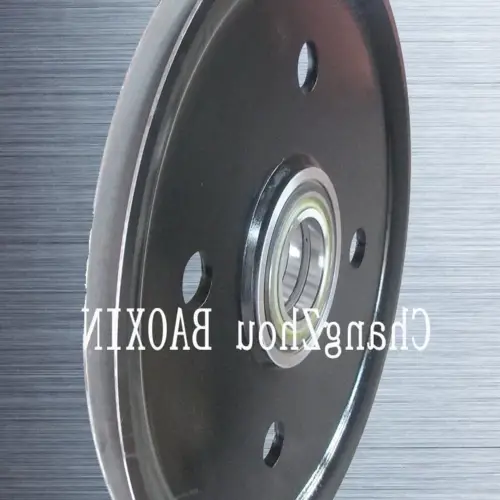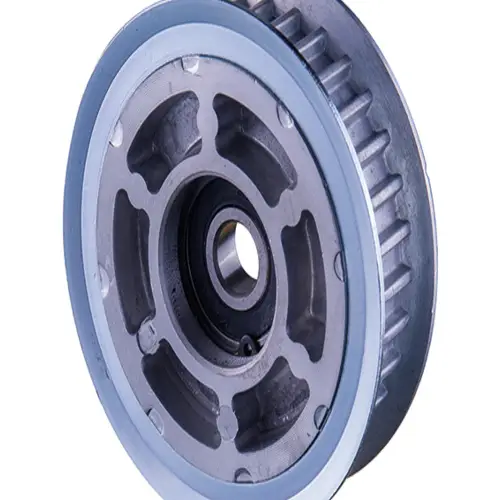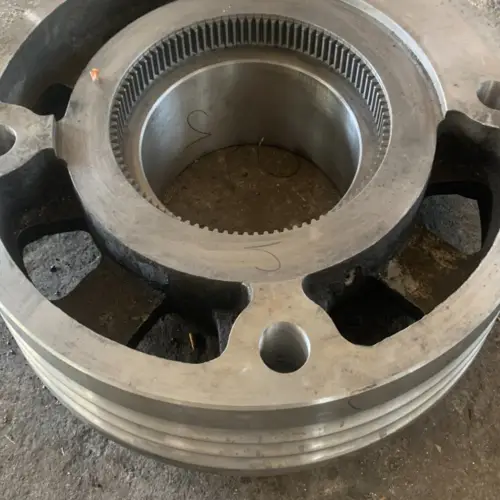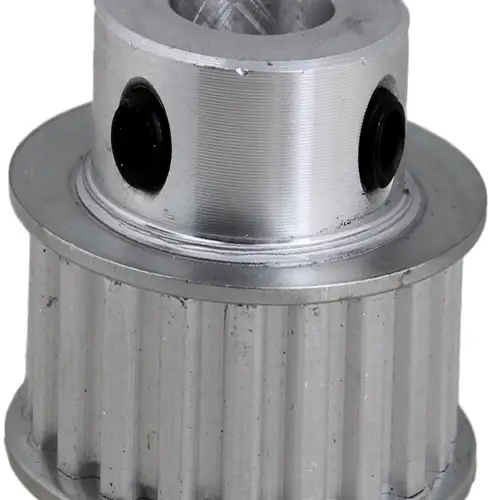
Buy China Hot Selling Hnarl Genie Retract Cable Sheave 88568 88568gt Genie Sheave Air Compressor Portable
Our retract cable sheave is a high-quality product that can be used with the Genie Telescopic Boom Lift Models S-60, S-65, S-60X, S-60XC, S-60HC, S-60TRAX, and S-65TRAX. It is made with durable materials and designed to meet the needs of industrial use.
Product Description
The HNARL Genie retract cable sheave is designed to provide long-lasting and reliable performance. It is a smaller version of the 88568 88568GT Genie sheave, and it is made for use with the Genie Telescopic Boom Lift Models S-60, S-65, S-60X, S-60XC, S-60HC, S-60TRAX, and S-65TRAX.
The retract cable sheave is made with high-quality materials to ensure durability and long-lasting performance. It is designed to withstand the rigors of industrial use and can provide reliable service for many years to come.
Packing Specifications
The packing specifications for the retract cable sheave are as follows:
- Length (mm): 300
- Width (mm): 300
- Height (mm): 50
- Weight (kg): 2
Product Delivery
We offer a range of shipping options to meet your needs. For small orders, sample orders, and trial orders, we recommend express shipping by DHL, FedEx, UPS, TNT, EMS, ARAMEX, or other providers. This option provides fast and convenient door-to-door delivery within 3-8 working days.
For medium orders, we recommend air transportation by plane. This option provides a faster and cheaper alternative to express shipping, with delivery within 5-10 working days. The consignee will need to take delivery at the airport.
For mass orders, we recommend sea transportation by vessel. This option is the most cost-effective, but it takes longer, with delivery within 20-45 days. The consignee will need to take delivery at the seaport.
Exhibition & Certifications
We are proud to have gained CE and ISO 13485 authentication for our factory. We participate in various exhibitions and hold certifications to ensure that our products are of the highest quality.
FAQs
Q1: How can I place an order?
A: You can contact us by email to discuss your order details, or you can place an order online.
Q2: How can I pay for my order?
A: After you confirm our PI, we will request payment. We accept T/T and Paypal, Western Union, and other payment methods.
Q3: What’s the order procedure?
A: First, we discuss order details and production details by email or TM. Then we issue you a PI for your confirmation. You will be asked to make a pre-payment or deposit before we start production. After we receive the deposit, we begin to process the order. We usually need 7-15 days if we don’t have the items in stock. Before production has finished, we will contact you for shipment details and the balance payment. After payment has been settled, we start to prepare the shipment for you.
Q4: What happens if I receive defective products?
A: We offer replacement for defective items. If there are some defective items, we usually credit them to our customer or replace them in the next shipment.
Q5: How do you check the quality of your products?
A: We have spot inspection and finished product inspection. We check the goods when they go into the next step of production procedure.
Q6: What other products do you offer?
A: Our company mainly supplies various products for industrial use, such as agricultural gearboxes, power output shafts, sprockets, fluid couplings, worm gear reducers, gears and racks, roller chains, pulleys, planetary gearboxes, timing pulleys, bushings, etc. We offer high-quality products at preferential prices and considerate services. Customers are welcome to customize drawings and samples to meet their specific needs.
Introduction
All the content of this page is from the Internet and is only for reference for product selection. Our products are replacement parts and not original spare parts. We are not the holder of the original trademarks mentioned in this content. Our replacement parts can be perfectly adapted to the original spare parts. If you need to buy original spare parts, please contact the original factory or supplier.
Performance Characteristics of Sheave
Sheave, also known as a pulley, offers several performance characteristics that make it a valuable component in various industries. Firstly, sheaves provide efficient power transmission, allowing for the smooth movement of belts or ropes. Secondly, sheaves help in reducing friction, preventing excessive wear and tear. Additionally, sheaves assist in load distribution, enabling the effective handling of heavy loads. Lastly, sheaves contribute to noise reduction, enhancing overall operational efficiency.
Types and Characteristics of Sheave
There are different types of sheaves available, each with its own unique characteristics. One common type is the fixed sheave, which remains stationary during operation. Another type is the movable sheave, which can be adjusted to control belt tension. Furthermore, there are compound sheaves that combine both fixed and movable elements. These types of sheaves offer flexibility in adapting to different operational requirements.
Advantages of Sheave Materials
Steel Sheaves
Sheaves made of steel are known for their exceptional strength and durability. They can withstand heavy loads and harsh operating conditions, making them ideal for industrial machinery and material handling applications.
Nylon Sheaves
Nylon sheaves are lightweight and resistant to corrosion, making them suitable for marine applications. They also offer low friction, reducing energy consumption and extending the lifespan of belts or ropes.
Polyurethane Sheaves
Polyurethane sheaves provide excellent wear resistance and are often used in automotive industry and agricultural equipment. They can withstand exposure to chemicals and offer enhanced gripping capabilities, ensuring reliable power transmission.
Application of Sheave
Sheaves find extensive application in various fields, including:
Industrial Machinery
In industrial machinery, sheaves play a crucial role in power transmission, enabling the smooth operation of conveyor systems, cranes, and other equipment.
Agricultural Equipment
Sheaves are used in agricultural machinery such as combines, tractors, and harvesters. They facilitate the movement of belts and ropes, enabling the efficient operation of these machines.
Automotive Industry
Sheaves are utilized in automotive systems, including engines and power steering. They help in transmitting power, ensuring the smooth functioning of the vehicle.
Marine Applications
Sheaves are essential in marine applications, such as winches and hoists. They enable the handling of heavy loads and contribute to safe and efficient maritime operations.
Material Handling
In material handling systems, sheaves are used in conveyors, elevators, and lifting equipment. They assist in the movement and transportation of goods, enhancing overall productivity.
Future Development Trends and Opportunities
The sheave industry is poised for significant growth in the coming years. Advancements in materials and manufacturing techniques will lead to the development of more efficient and durable sheaves. Additionally, the increasing demand for automation and the expansion of industries like construction and logistics will create new opportunities for sheave manufacturers.
Choosing a Suitable Sheave
When selecting a sheave, several factors should be considered:
Load Capacity
Ensure that the chosen sheave can handle the intended load without compromising performance or safety.
Material
Select the appropriate sheave material based on the specific application requirements, considering factors such as corrosion resistance, wear resistance, and gripping capabilities.
Diameter and Size
Choose a sheave with the correct diameter and size to ensure compatibility with the belt or rope being used.
Type of Pulley
Determine whether a fixed sheave, movable sheave, or compound sheave is most suitable for the intended application.
Bore Size
Consider the bore size of the sheave to ensure proper fitment with the shaft or spindle.
Summary
In conclusion, sheaves offer numerous performance characteristics that make them indispensable in various industries. Their ability to transmit power, reduce friction, distribute loads, and minimize noise contributes to improved efficiency and longevity. By understanding the types, materials, and applications of sheaves, as well as considering the essential factors for selection, businesses can make informed decisions to meet their specific needs and enhance overall operational performance.
Author: Dream








